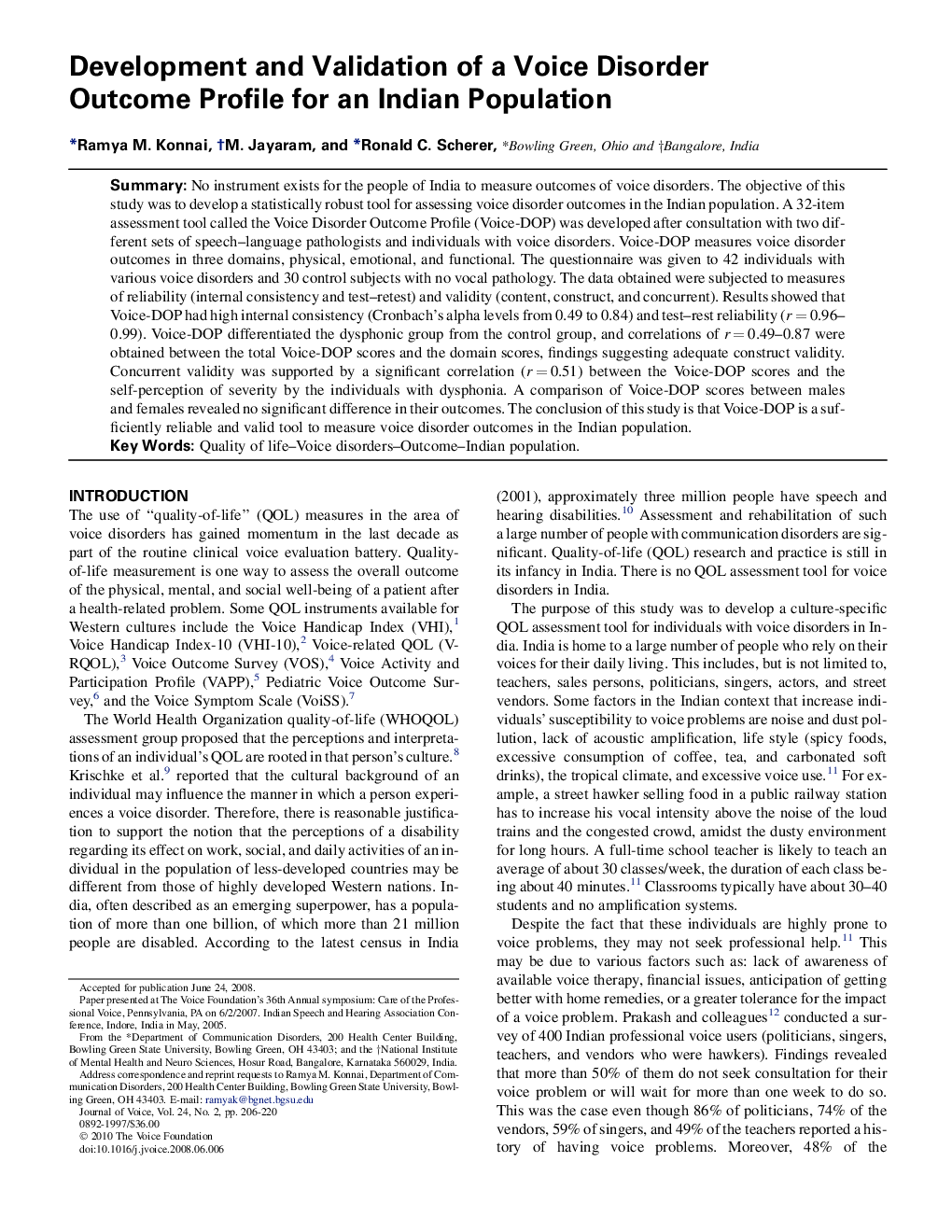| Article ID | Journal | Published Year | Pages | File Type |
|---|---|---|---|---|
| 1102533 | Journal of Voice | 2010 | 15 Pages |
SummaryNo instrument exists for the people of India to measure outcomes of voice disorders. The objective of this study was to develop a statistically robust tool for assessing voice disorder outcomes in the Indian population. A 32-item assessment tool called the Voice Disorder Outcome Profile (Voice-DOP) was developed after consultation with two different sets of speech–language pathologists and individuals with voice disorders. Voice-DOP measures voice disorder outcomes in three domains, physical, emotional, and functional. The questionnaire was given to 42 individuals with various voice disorders and 30 control subjects with no vocal pathology. The data obtained were subjected to measures of reliability (internal consistency and test–retest) and validity (content, construct, and concurrent). Results showed that Voice-DOP had high internal consistency (Cronbach's alpha levels from 0.49 to 0.84) and test–rest reliability (r = 0.96–0.99). Voice-DOP differentiated the dysphonic group from the control group, and correlations of r = 0.49–0.87 were obtained between the total Voice-DOP scores and the domain scores, findings suggesting adequate construct validity. Concurrent validity was supported by a significant correlation (r = 0.51) between the Voice-DOP scores and the self-perception of severity by the individuals with dysphonia. A comparison of Voice-DOP scores between males and females revealed no significant difference in their outcomes. The conclusion of this study is that Voice-DOP is a sufficiently reliable and valid tool to measure voice disorder outcomes in the Indian population.
